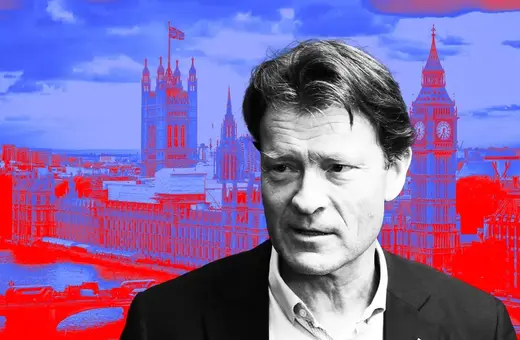We often define ourselves based on the way others see us. But it doesn’t have to be this way. We are not our nationality, or our skin colour, or our job title. We are a human essence. The more multi-cultural our world, the less we will be defined by our outer traits, and the more we will be acknowledged to be our most inner, essential self, writes Janne Teller.
When I first saw the French-Moroccan artist Yasmina Bouziane’s self-portrait as a modern Beduin photographer (‘Native Photographing, the signature picture, Reluctantly Untitled #6’), it instantly struck me how the photo regarded me just as well. In her staged hand Yasmina’s lense takes aim at the audience, the camera is turned 180 degrees: The art sees the one who sees.
All the while I was contemplating a humorous, identity-exploring, modern colonial portrait, I myself turned into nothing but someone watching that very photo watching me. I must assume that the photo’s frame of reference is nothing but itself. It cannot fathom anything about me except for my looking at it, which further implies that seen from another photo, I’ll be someone else; I’ll be a person who regards that other photo. And I’ll turn into yet another, when I move my gaze onwards to a third photo.
Isn’t it similar with human beings: Who we are in the eyes of the other, depends more on the capacity and frame of reference of the person the eyes belong to, than who we actually are?
But who are we then, if the eyes of the other cannot be used as a basis for calibration?
Human identity, to my mind, can be divided into three distinct strata: Outermost, the one others perceive us as, which I’ll here call the coat; in the middle, the one we define ourselves as vis-à-vis our surroundings, the clothes, that means all the external identity parameters we attach to ourselves, nationality, culture, institution of religion, job title, home zip code, car horse power, civic status and groups we belong to, social media presentations & follower/following etc, all what Freud would call our persona; and innermost, our real, unfeigned being, the one we are beneath all the identity clothing and coats, our inner nakedness of person, our essence of being.
By our essence, I mean the combination of human characteristics that lie in our nature and those abilities and values we have accrued through our lives, i.e. our authentic I, or what with an old-fashioned concept could be termed the expression of our soul, our personality. Am I a kind person, or a belligerent one, am I independent or pliable to authority, am I generous, trustworthy and reliable, or am I irresponsible, disingenuous, stingy? Am I curious or closed-minded, am I courageous or cowardy, humorous and optimistic or serious and cynical, strong or weak? Am I both at different times: then, when am I what?
But in all of the myriad patterns of expression it can take, the essence itself remains one and the same.
Similar human essences will take on different outward form depending on our external identities – our clothes and coat - particularly our cultural and social identity. But in all of the myriad patterns of expression it can take, the essence itself remains one and the same.




















Join the conversation